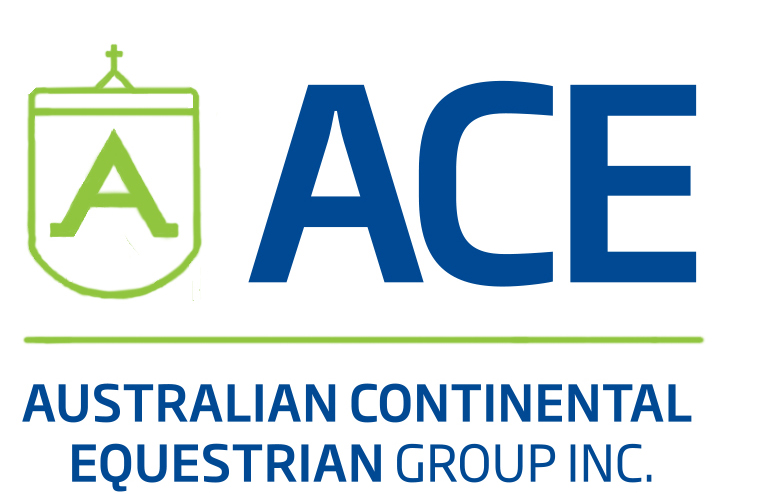Welcome To Australian Continental Equestrian Group Inc!
We are proud to be a member of the World Breeding Federation for Sport Horses (WBFSH).
The ACE Passport has been added to the list of “FEI approved national identification documents” available on the FEI website as well as on the FEI Database.
This means that this Passport can now be used as a national identification document for FEI horses.
Postal Address:
ACE Group Inc.
PO Box 224
Canungra Qld 4275
Phone: 0436 010 676
email to: [email protected]
Why Assess
- To provide feedback for you about your horse from our expert assessor
- To provide quality control against the ACE Group Inc. and your own breeding goals.
- To establish a benchmark within a national and international market
- To provide owners with an estimated breeding value or sale value.
- To provide owners with an indication of where their horse may shine, what discipline they should be steering their horse towards (Dressage, Showjumping, Eventing, etc)
- Judging of all aspects: conformation, movement, temperament and jumping: if applicable an estimation of qualities as a ridden horse
Often, it’s a combination of factors: Genetics (conformation and attitude, “heart”), good care, and training.
Whether judging or selecting a horse, buying a new horse, making breeding decisions, or determining your horse’s suitability for a certain sport or activity, having it assessed can help you.
‘A horse with good conformation has no obvious faults that detract from his general makeup. In addition, he usually has grace and “presence”, that indefinable something that catches the eye and pleasing overall appearance, coupled with fluidity and grace, that help convince a horseman that he has found a winner.‘ (Horse Conformation Handbook)
A WELL-BUILT riding horse can run faster, farther, and more nimbly than any other animal with a rider on its back. This athletic prowess springs from the form and function of the equine body. A horse with good conformation is more comfortable to ride and easier to train than a horse with poor conformation because he can handle himself better and move in any direction with ease and flexibility.

We often ask horses to perform tasks that are more demanding than anything they would do naturally. We ask them to travel at high speeds while carrying a rider, often for distances far greater than they would run in the wild to elude a predator. We may ask a horse to jump higher over obstacles than he would ever jump in nature. Our expectations often put a horse’s body under much greater stress and strain than a free-roaming wild horse would ever encounter. (Horse Conformation Handbook
To reduce the risks of physical injury, the horses we ride must have excellent conformation and fluid, efficient action – attributes that help, rather than hinder, job performance.
Horse conformation: (1) Shoulder vs. ground angle; (2) Shoulder angle; (3) Carpus joint; (4) Elbow angle; (5) Fetlock joint angle; (6) Pastern vs. ground angle; (7) Hip angle; (8) Stifle angle; (9) Hock angle; (10) Hind fetlock joint angle; (11) Hind limb pastern vs. ground angle.
